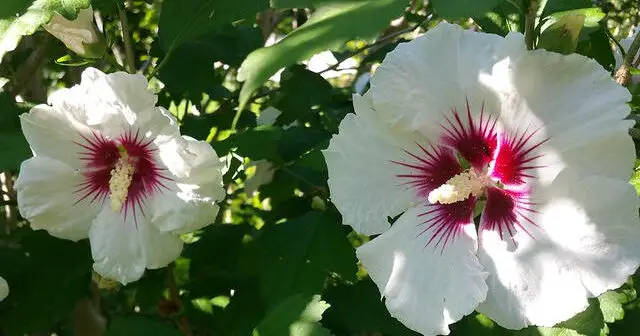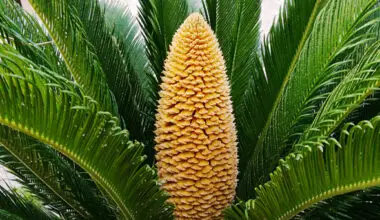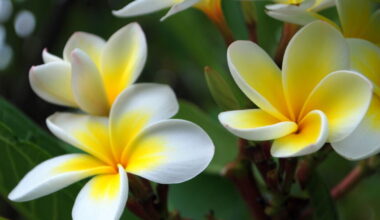The hibiscus is an exotic plant. A shrub that can be often seen grown indoors. It is a beautiful flowering plant that can be used in late spring or summer to beautify balconies, terraces and gardens by growing it in a pot.
It is also possible to cultivate it in the open ground, rich and well drained in the regions with mild lpus. This hibiscus Rosa-Sinensis is a frosty shrub with a superb flowering from June to September, and with full or very cut foliage, sometimes tinted white or tinted pink.
Contents
When to plant the hibiscus in the soil
Plant the garden hibiscus in autumn or spring. If you plant several plants side by side, keep a planting distance of 5 fts between each plant.
Planting hibiscus in the ground
Plant the perennial hibiscus in non-calcareous, draining, humus-rich soil. They find their place in beds but require a cover of straw or leaves on the ground in winter for root protection against frost.
Exposure must be sunny.
As with all shrubs, prepare the planting hole in advance by enriching the soil with a good supply of compost, cover it with soil so that it is not in direct contact with the roots. The hole should be twice as large as the root ball of the hibiscus to be planted.
Plant preferably in spring with a large supply of soil and/or compost.
Here is how to proceed in a few steps:
– Work the ground on a spade height without turning it over.
– Work the soil with mature compost, potting soil and sand for drainage.
– Scrape the root ball from the hibiscus to free the roots.
– Place the hibiscus plant(s).
– Fill with the mixture.
– Water
In which soil and under which exposure plant hibiscus
Hibiscus thrives in any good, fresh, well-drained, fertile garden soil. Favour a sunny exposure.
How to take care of hibiscus
- In the spring, bring them fertilizer and prune them if necessary. Read our hibiscus pruning tips to learn more.
- In the summer, be sure to water them when the heatwave and drought are on. Remove wilted flowers to stimulate new blooms.
- In fall and winter, protect the hibiscus from the cold with a thick mulch at its base.
Hibiscus cultivation and maintenance
Garden hibiscus is easily cultivated in sunny weather like many other ornamental shrubs. It does not require special care when it lives in well-drained, fairly rich and neutral soil.
Water when it is hot and dry. It is recommended to add compost to the plant every year and cuttings are made at the end of the summer for planting in the garden the following spring. In areas with little rainfall, mulch the plant to conserve moisture longer.
Pruning Hibiscus
Depending on the desired size of the shrub, the garden hibiscus is pruned every other year or three in the autumn to keep a compact and well-furnished habit from the base.
For this purpose, the stems are shortened by about a third in length. It can also be driven on stem, removing the branches from the base to keep only a bunch of stems in height. But in all cases, it is necessary to wait at least the 3rd year of growth to carry out a size, the time to the plant to settle well and to strengthen.
Hibiscus diseases and parasites
In the garden, Althea (garden hibiscus) remains free of parasites, it is also very resistant to diseases provided it is in drained soil. When it suffers from drought, its leaves sag, but as soon as it is watered, it is again beautiful and flowering.
Indoors, China rose attracts white flies, red spiders and scale insects in a too dry atmosphere. Spray the substrate and move the pot away from heat sources.
Summary
The garden hibiscus or Althea brightens up hedges, lawns and flower beds while constituting an important plant volume during the summer. Its flowers bloom from mid-June to October and its growth is rapid.
The garden hibiscus is easily cultivated in sunny weather like many other ornamental shrubs. It does not require special care when it lives in well-drained, fairly rich and neutral soil.
Water when it is hot and dry. It is recommended to add compost to the plant every year and cuttings are made at the end of the summer for planting in the garden the following spring. In areas with little rainfall, mulch the plant to retain moisture longer.









